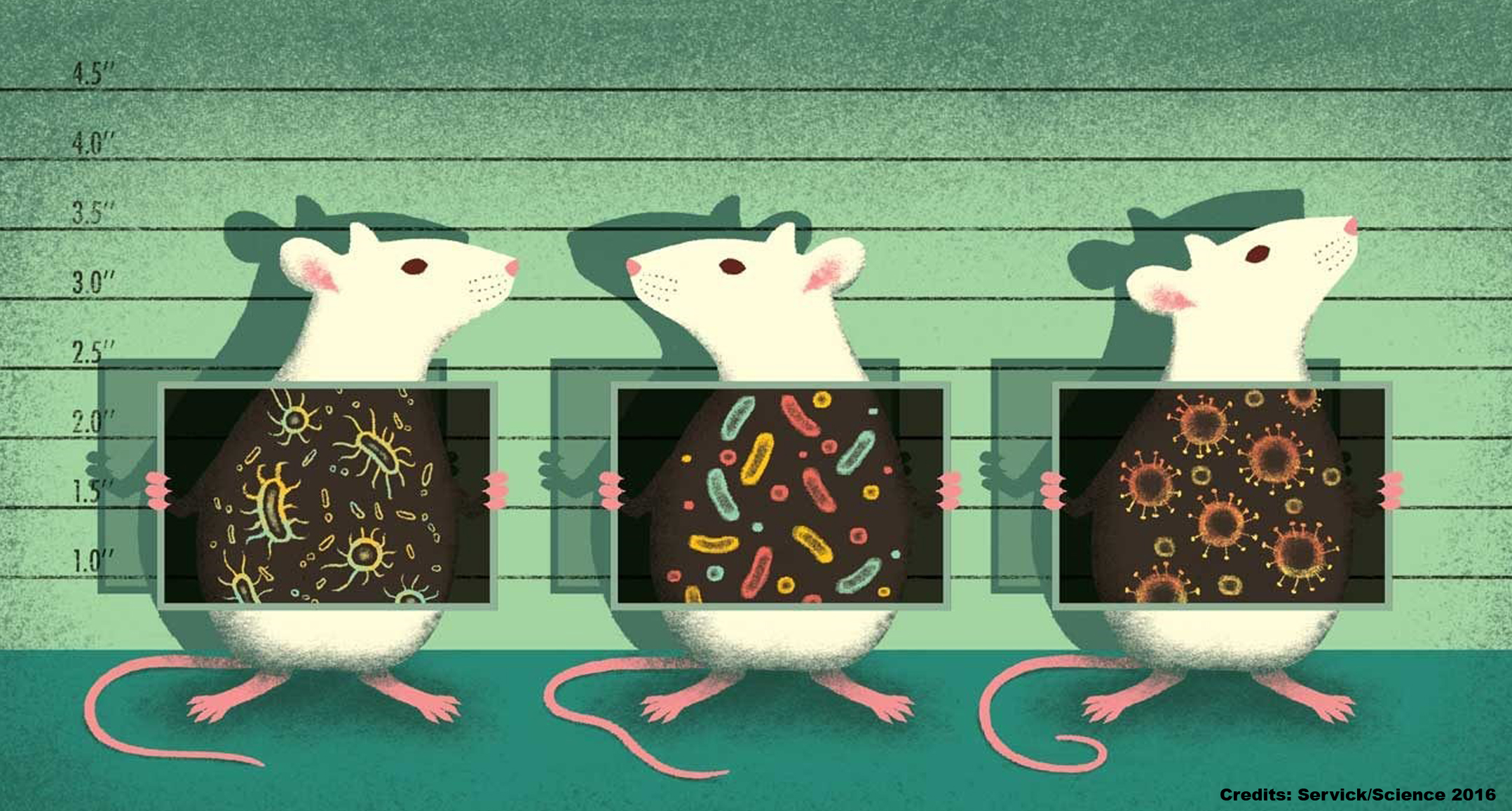The mouse is one of the most commonly used experimental animals in gut microbiota mechanistic studies. A recent report published by Kelly Servick, a science journalist and staff writer at Science, proposes that laboratory mouse microbiota is an invisible variable that may explain why it is so difficult to reproduce the results of mouse experiments.
Although for in vivo experiments with mice the researchers usually try to use mice that are as similar as possible (the same strain, weight, sex, age, litter, the same environment, and even the same seller), the variability of results is huge and the exact outcomes are often difficult to reproduce.
When bacteria are analysed in the faeces of mice of different brands, diversity and abundance of certain microbes is different. Thus, the microbial differences might account for why replicating many of the results in preclinical experiments proves so difficult.
Backing up this idea, according to a recent article in Nature, the metagenome (that is, the combination of host and microbiome genes) is a relevant factor that may influence both experimental results and the reproducibility of experiments with in vivo mammalian models. Other factors that may affect the response of the mouse are: time at which the researchers manipulated the variable, or gave the treatment; the type of “bed” the mouse had in the cage; the height at which the cage was located on the shelf; or even the gender of the person who manipulated them. Even small differences in the microbiota may explain why mice with the same genetic mutation respond differently.
There is no consensus regarding the normal or healthy composition of gut microbiota in mice, as it is modulated by several factors such as feeding, stress, sex, and age. Strategies to monitor how microbes can influence the biology of the mouse are currently needed.
As we know that the microbiota of mice from the same litter tends to be more similar, in every experiment with mice the control group should always be of the same litter as the experimental group.
On the other hand, one way of monitoring the microbial world inside a mouse would be through a Sentinel mouse. This is a mouse left alone in a cage on the same shelf as experimental mice, to assess exposure to potential pathogens that could interfere with the experiment. At the end of the experiment, the animal is sacrificed and tested for the presence of pathogenic microorganisms that may have infected cages and affected the results. When a pathogen is detected, all cages on the shelf are sterilized. So far it is not done, but future experiments could include a sentinel mouse for intestinal microbiota analysis.
Some researchers have mixed their laboratory mice with wild mice purchased at a pet store. These “dirty” mice tend to have a much richer and abundant intestinal microbiota and are a better approximation of a human gut microbiota, better than a standard laboratory mouse microbiota. Besides this, the “dirty” mice often carry diseases already eradicated in most laboratory mice, such as hepatitis or pneumonia. Exposure to these diseases carried by their cage mates can kill nearly 25% of the colony of mice, but those who survive can generate an immune response to fight infection. These mice may be a better, more realistic, model for studying the human immune system and infectious diseases.
On the whole, getting reproducible results is critical to the advancement of science. The authors propose consensus among researchers, funding agencies, reviewers and editors of scientific journals, and academic institutions on minimal information that should be added to mouse experiments. In addition to information on aspects such as mouse genetics, experimental method, and the maintenance of the animals, researchers should add the analysis of the microbiota and its possible effects on the biology of the animal.
References:
Servick K. Mouse microbes may make scientific studies harder to replicate. Science. August 16, 2016. doi: 10.1126/science.aah7199.
Stappenbeck TS, Virgin HW. Accounting for reciprocal host-microbiome interactions in experimental science. Nature. 2016; 534(7606):191-9. doi: 10.1038/nature18285.


